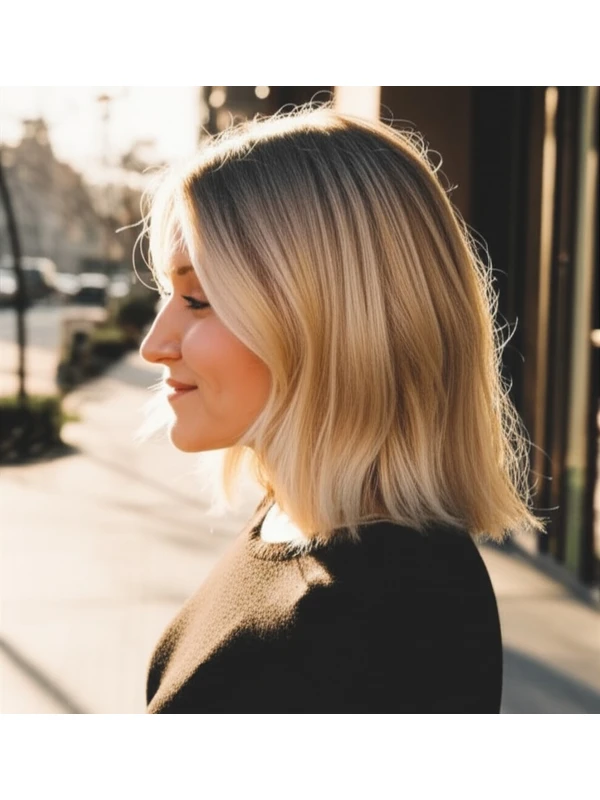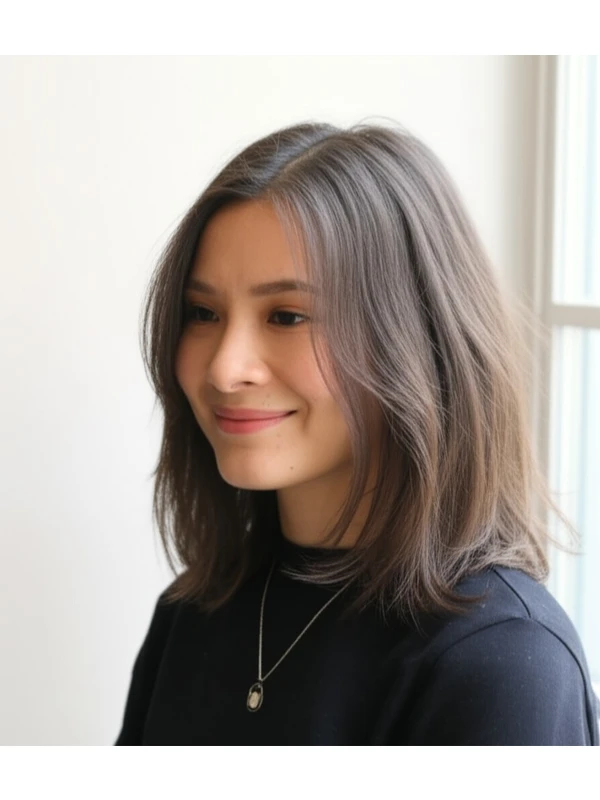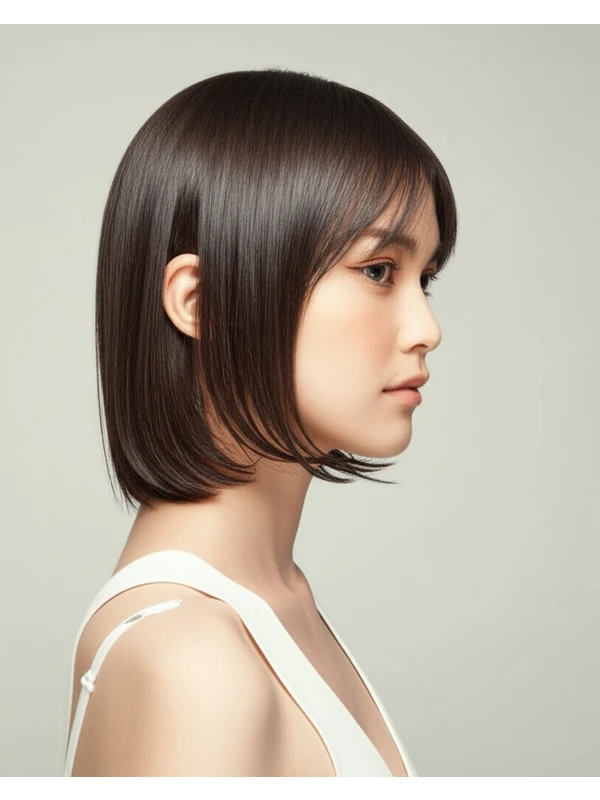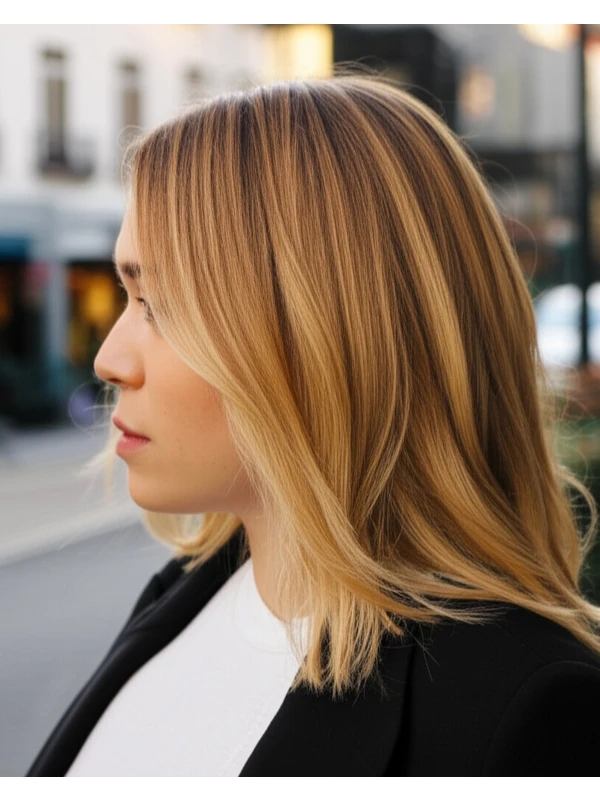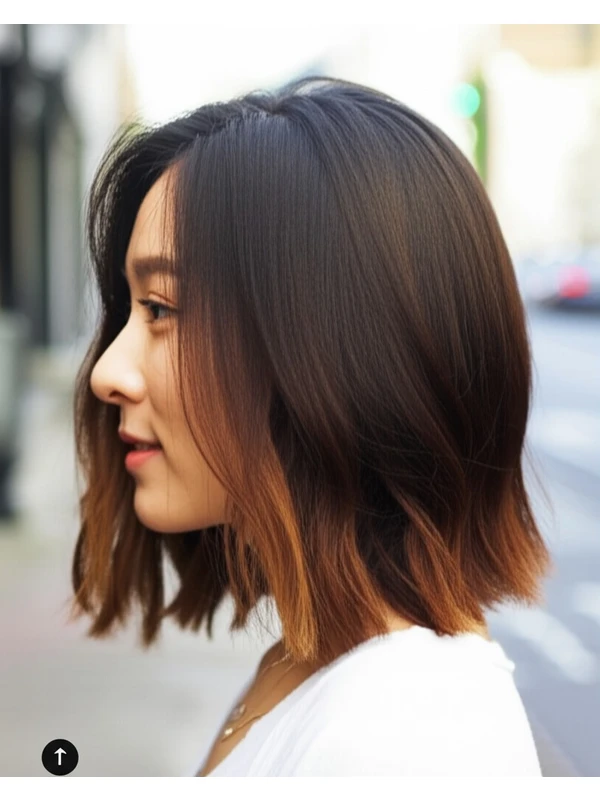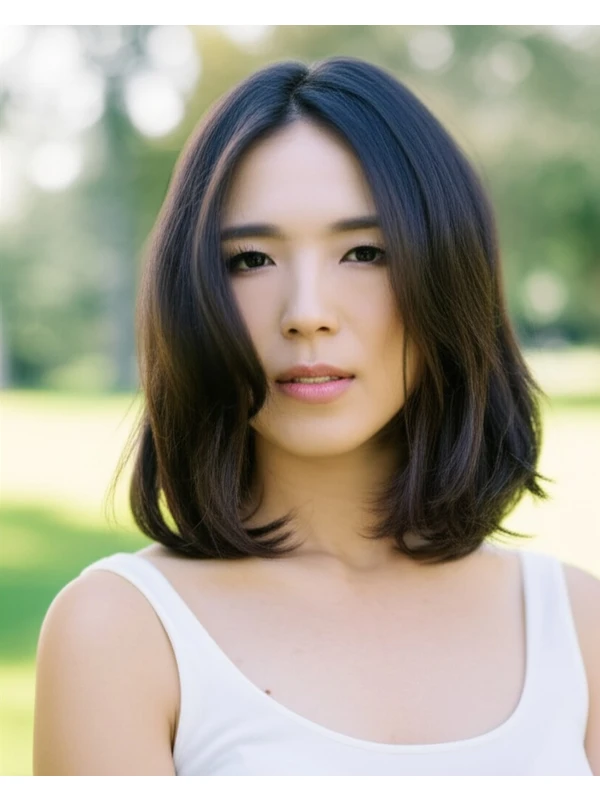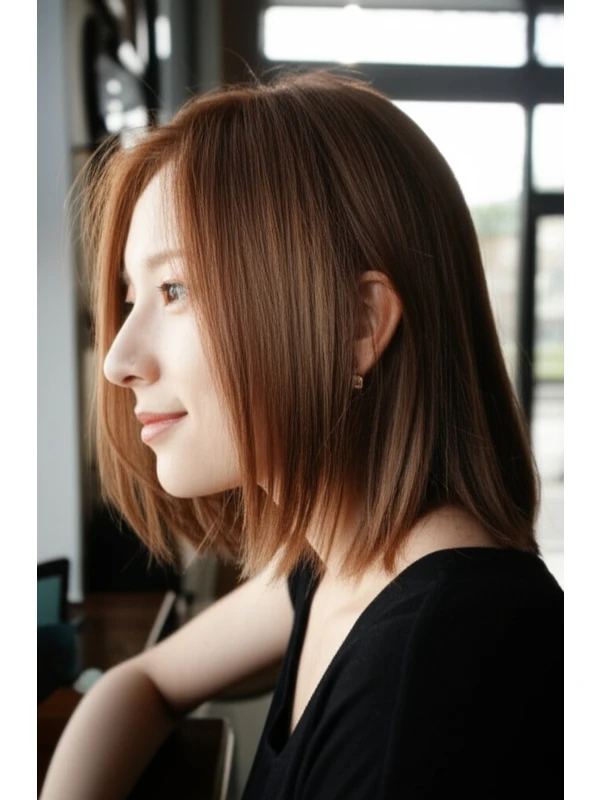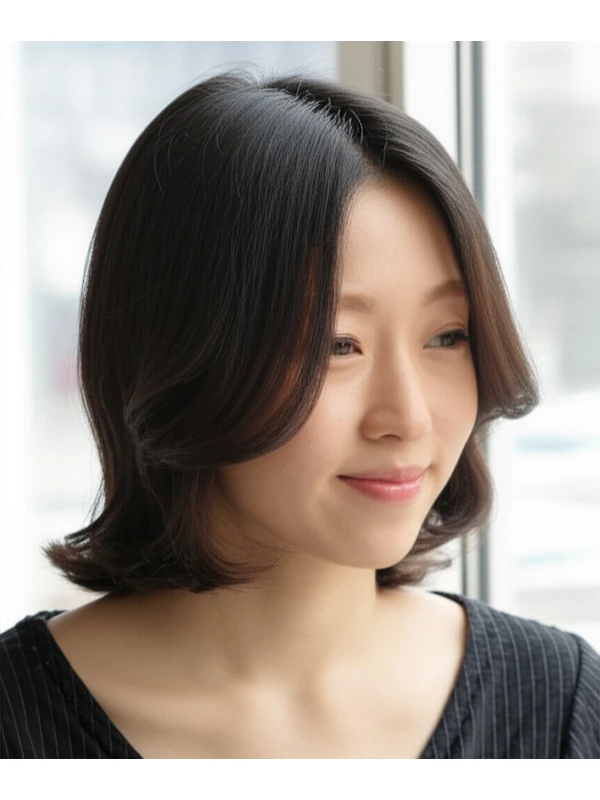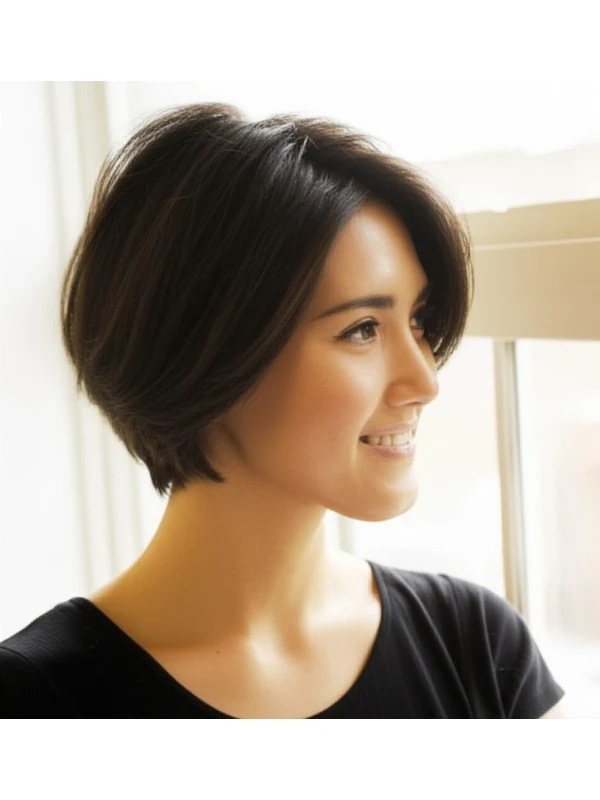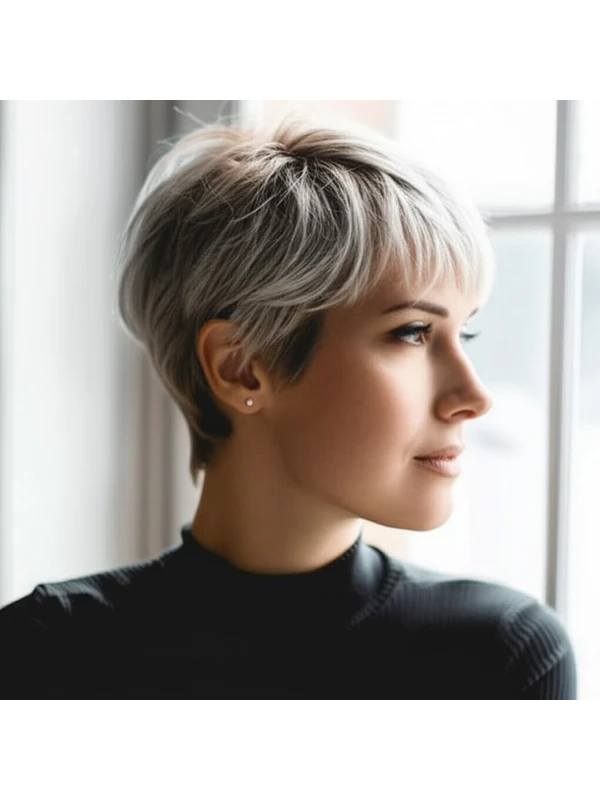#The Sleek Straight Hairstyle: A Modern Classic
The sleek straight hairstyle is a timeless look that exudes confidence and sophistication. But achieving it well requires more than just running a flat iron over your hair – understanding its nuances, how it interacts with your features and hair type, is key to nailing the look. This guide breaks down everything you need to know about rocking this polished style.
#1) Background & Definition: What Is Sleek Straight?
The sleek straight hairstyle prioritizes a smooth, flat surface across all layers of the hair. It’s built on precision cutting techniques that remove bulk and create a unified flow from root to tip. The geometry is often blunt or slightly layered towards the ends – depending on desired movement - with minimal graduation (shortening) throughout the length.
Key Features:
- Smoothness: The defining characteristic; no bumps, frizz, or waves are visible.
- Precision Cut: A sharp, clean cut is essential for a polished look.
- Minimal Texture: While some slight movement can enhance realism, texture is generally minimized.
- Glossy Finish: Healthy-looking shine contributes significantly to the overall "sleek" effect.
Typical Length Ranges: This style works well from chin length (bob) up to shoulder length or longer. Longer lengths require more effort to maintain smoothness and avoid weight pulling down on the face.
Alternative Names: Glass hair, pin straight, super-straight.
#2) Face Shape Fit: Finding Your Angle
The sleek straight hairstyle can be incredibly flattering across various face shapes, but adjustments are often needed for optimal balance.
- Oval: Lucky you! This style generally looks fantastic on oval faces as it follows the natural symmetry beautifully. A middle part is a classic choice.
- Fringe/Bang Options: Side-swept bangs can soften features; blunt, straight-across bangs add boldness.
- Round: Straight hair can visually lengthen a round face. Avoid chin-length bobs that accentuate width. Opt for longer lengths (collarbone or below). A deep side part creates asymmetry and slims the face.
- Fringe/Bang Options: Long, wispy bangs that blend into the hairline are more flattering than blunt, short styles.
- Square: Softening a square jawline is key. Slightly longer lengths (collarbone or below) work best to avoid emphasizing angles. Layering around the cheekbones can soften features.
- Fringe/Bang Options: A soft, side-swept fringe helps diffuse the sharpness of a square face.
- Heart: The goal is to balance a wider forehead with a narrower chin. Chin-length or slightly longer styles work well. Volume at the jawline can create more symmetry.
- Fringe/Bang Options: A wispy, eyebrow-grazing fringe softens the forehead and draws attention downwards.
- Diamond: Sleek straight hair complements a diamond face shape by softening angular features. A middle or slightly off-center part works well.
- Fringe/Bang Options: Side-swept bangs can soften the cheekbones; avoid blunt, heavy fringes that accentuate width.
- Oblong (Long): Adding volume at the sides is essential to visually widen a long face. A chin-length bob with subtle layering can help create this effect.
- Fringe/Bang Options: A full, straight-across fringe can shorten the appearance of an oblong face.
#3) Body Proportions & Height Guidance
The sleek straight style isn't just about your face; it interacts with your overall body proportions too!
- Petite (Under 5’4”): Shorter lengths (chin to shoulder) are generally more flattering, preventing the hair from overwhelming a smaller frame.
- Average Height (5’4”-5’9”): Most lengths work well; consider your shoulder width and neck length.
- Tall (Over 5'9"): Longer lengths (shoulder to mid-back) can create a balanced silhouette.
- Narrow Shoulders: Adding subtle volume at the sides of the head can visually broaden shoulders.
- Broad Shoulders: Avoid adding too much volume on top, as this will accentuate shoulder width. A sleek, straight style helps minimize bulk.
- Short Neck: Longer lengths (collarbone or below) create the illusion of a longer neck. Avoid chin-length bobs that can emphasize a short neck.
- Long Neck: Shorter to medium lengths work well; they don't accentuate the length of the neck as much.
#4) Works Best With Hair Types & Densities
This style is most achievable with certain hair types, but adaptability is key!
- Straight (Type 1): The easiest canvas for this look! Requires minimal effort to achieve a truly sleek finish.
- Wavy (Type 2): Can be straightened successfully, but requires more heat protection and smoothing techniques. Fine wavy hair can lack volume; thicker wavy hair may need layering to prevent weight pulling down on the ends.
- Curly/Coily (Types 3 & 4): Requires significant straightening effort and careful product selection to minimize damage. The higher the curl pattern, the more important it is to prioritize moisture and heat protection.
- Shrinkage: Curls and coils can shrink significantly when dry. Account for this shrinkage when determining length – a style that looks shoulder-length wet may appear much shorter when dry and straight.
- Fine Hair: Can look limp without proper volume at the roots. Root lifting products are essential.
- Medium Hair: Generally easy to style, but can sometimes lack shine.
- Thick Hair: Requires more precision cutting to remove bulk and prevent a heavy appearance. Layering is often necessary.
#5) Styling Variations: From Casual Cool to Evening Glam
The sleek straight look isn't one-dimensional!
- Sleek vs Textured: While the core concept is smoothness, subtle movement can add realism. A few strategically placed bends or waves near the ends prevent a "helmet head" effect.
- Middle vs Side Part: A middle part offers symmetry and balance; a side part adds softness and asymmetry.
- Fringe Variations: Blunt bangs create drama; wispy, feathered bangs soften features.
- Occasion Styling:
- Casual: Minimal product, air-dried or quickly straightened.
- Office: Polished and professional – a sleek middle part is ideal.
- Evening: Add shine serum for extra gloss; consider a deep side part with subtle volume at the roots.
#6) Maintenance: Keeping it Sleek
- Trim Cadence: Every 6-8 weeks to maintain shape and remove split ends.
- At-Home Routine: Regular deep conditioning treatments are vital, especially for those straightening curly or coily hair.
- Heat vs Air Dry: Frequent heat styling can damage hair; prioritize air drying when possible. When using heat, always use a heat protectant!
- Product Checklist:
- Sulfate-free Shampoo & Conditioner: Cleanses and hydrates without stripping moisture.
- Leave-in Conditioner: Detangles and adds moisture.
- Heat Protectant Spray: Essential for minimizing damage from hot tools.
- Smoothing Serum/Oil: Adds shine and tames frizz.
- Root Lifter (optional): For added volume at the roots.
- Estimated Daily Styling Time: 15-60 minutes, depending on hair type and length.
#7) Grow-Out Roadmap
- Months 1-3: The initial shape is most defined. Regular trims are crucial to maintain the blunt lines.
- Months 3-6: The style may start to lose its crispness as it grows longer. Consider adding subtle layers to prevent weight pulling down on the face.
- Maintaining Shape: Between cuts, use a smoothing serum and focus straightening efforts at the roots for consistent results.
#8) Color Pairings: Enhancing the Sleekness
- Cool Undertones (Pink, Blue): Enhance the sleek, polished look with cool-toned highlights or glosses.
- Warm Undertones (Gold, Copper): Add dimension and warmth with caramel or honey tones.
- Low-Commitment Options: Gloss treatments add shine without permanent color changes.
#9) Season & Occasion Guide
- Spring/Summer: Lighter product usage to avoid a heavy feel in warmer weather. Consider a slightly more textured finish for relaxed vibes.
- Fall/Winter: Add extra moisture and shine to combat dryness. A sleek, polished look is perfect for formal events.
- Work: Sleek and professional – minimal fuss.
- Weddings: Opt for a high-shine gloss treatment for added glamour.
- Parties: Experiment with side parts or subtle volume at the roots.
#10) Cost & Time
- Salon Time: 45 minutes - 2 hours, depending on hair length and complexity.
- Price Range: Relatively moderate to high – expect a slightly higher cost due to precision cutting techniques.
#11) Pros & Cons
Pros: Timeless style, versatile for various occasions, can be very flattering. Cons: Requires regular maintenance trims, potential heat damage (if not careful), can lack volume without proper styling.
#12) Salon Consultation Script: Questions to Ask Your Stylist
- "I'm interested in a sleek straight hairstyle. Can you assess if my hair type and texture are suitable?"
- “What length would best complement my face shape?”
- "How can we incorporate layers (if any) to maintain movement without sacrificing the sleekness?"
- "Can you recommend products specifically for maintaining this style at home?"
- "What's the best way to protect my hair from heat damage during styling?"
